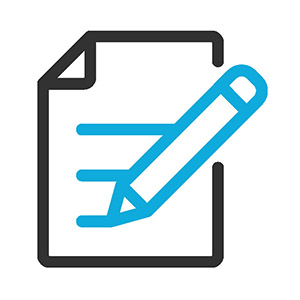
What is a Cover Letter?
A cover letter is a crucial element of any application which is why it should be the first page a recruiter in Trinidad and Tobago sees rather than a mere addition to a resume. It is sent with a resume but is a little bit different because it is tailored to the job you’re applying for rather than being an overview of your skills and experience.
With this letter, you display your writing style far better than in a job application letter or a resume because you add some details that are left out of the other documents. It illustrates that you possess the qualities the job requires and showcases your suitability for the vacancy. Not every job posting specifically asks for a cover letter, but we believe you should include one with every application.
What to Include in your Cover Letter
A cover letter should allow a hiring manager in Trinidad and Tobago learn more about your personality, why you are applying and why you are an excellent fit. With this in mind, we outline a few dos and don’ts below:
Concise Points: As you only have one A4 page to work with, get to the point and write about why you want the job and more importantly, why you are qualified.
Specificity: Although it is tempting to write about all your achievements, skills and strengths, you need to leave out certain details and focus on whatever fits that particular job opening. For instance, if the opening is in retail, you should include details of when you worked part-time in a shop. Also, add accurate information about the company and the job. For example, write about why you like what the company does, what intrigues you about the role, where you saw the advertisement and when you can start.
Professionalism: Steer clear of formalities such as colloquialisms, slang or jargon. Use clear terminology and use a professional tone throughout without sounding like a corporate robot! Get someone to proofread the cover letter as writers of documents are usually the last people to spot spelling and grammatical errors.
Relevant Personal Details: Add your postal address, email address, full name, and telephone number.
Facts & Figures: Back up any claims you make with cold, hard data.
What NOT to Include in your Cover Letter
A regurgitation of your Resume: The purpose of the cover letter is to add to the resume rather than repeating it. A common mistake made by applicants that search for jobs in Trinidad is to repeat the bullet points in the resume in their letter. A better tactic is to elaborate on key aspects of your resume. So if your resume says you reviewed invoice disputes, your cover letter can add that by resolving these disputes, you gained analytical knowledge and learned how to communicate diplomatically with angry customers.
Weaknesses: The time and place to discuss weaknesses is the interview (and even then you must learn to reframe them). A resume in Trinidad and Tobago will reveal if you don’t meet all the requirements for the job, so there is no need to emphasize that point. Instead, focus on how your experience can translate into the new role.
A Focus on you: Hiring managers in Trinidad and Tobago are not concerned about what the job will do for you; they want to know what potential employees can do for the company. As a result, you have to craft your cover letter in such a way that you clearly demonstrate how your skills and qualifications will add value to the organization.
Irrelevant Personal Details: As is the case with your resume, exclude information about your age, sexual orientation, and ethnicity.
Cover Letter Presentation Tips
A cover letter should be no longer than one A4 page in length and it consists of an Introduction, Main Body, and Conclusion.
Introduction: Indicate the reason why you are writing in the first place. Let them know who you are, the role you’re applying for and outline your objective.
Main Body: Highlight your qualifications and strengths and show how they relate to the vacancy. Rather than repeating what you said in your resume, expand on relevant information and write about some strengths and personal qualities. The main body includes two paragraphs.
The first touches on why you want to work for the company and mentions your knowledge/passion for the industry. The second paragraph highlights skills, experience, and strengths.
Conclusion: Round up the cover letter by thanking the employer for their time and stating that you hope to hear from them shortly.
Showcase your talents
Always look to write in a ‘balanced’ tone. Striking a balance between assertiveness and professionalism is important. Unlike a resume which is far removed from a ‘conventional’ writing style, a cover letter is your chance to create a flowing document that showcases your talents.
Naturally, the key is to focus on the needs of the employer instead of your own. Under no circumstances should you use a generic cover letter for every application. Recruiters in Trinidad and Tobago are aware of this trick and will reject your candidacy in a heartbeat.
